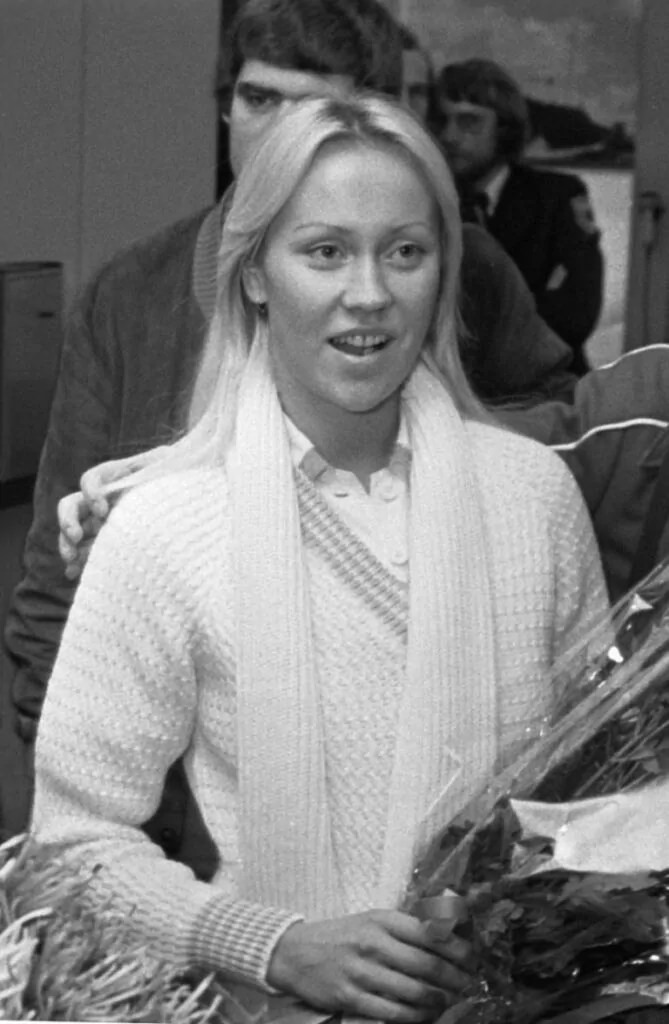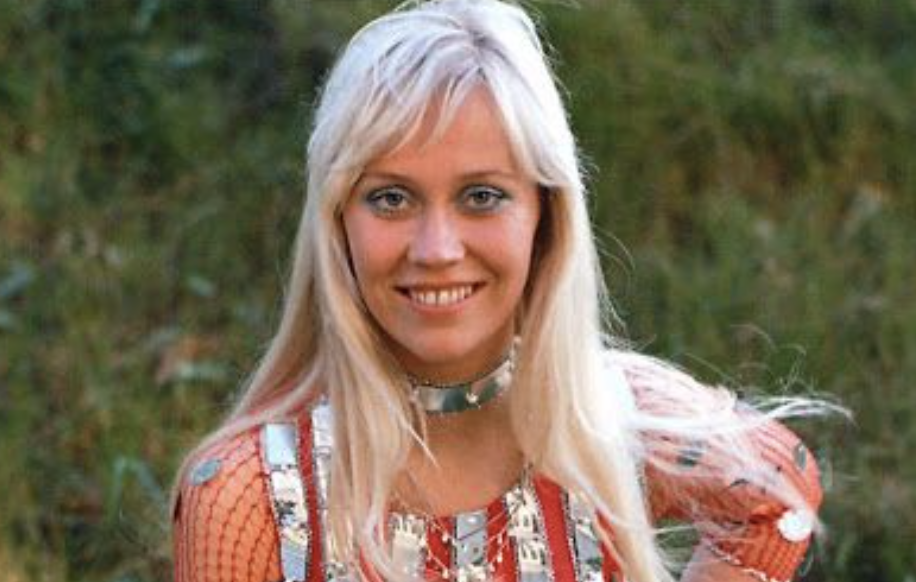Today, ABBA is recognized as one of the world’s most illustrious bands. The Swedish group is still regarded as a global sensation. Agnetha Faltskog, one of the group’s members, has opted for a life away from the spotlight.
One of the lead vocalists in ABBA, along with Anni-Frid Lyngstad, was Faltskog. She broke people’s hearts with some songs while making them dance with an all-time great pop voice. But more than anything, she and her bandmates became some of the most interesting musical figures ever.
Faltskog now leads a stable life in Sweden, but that doesn’t mean she has stopped creating music. At age 72, she looks incredible now!

Few people can claim they haven’t heard of ABBA. Today’s 10-year-olds probably dance as wildly as anyone ever did when they hear the band’s music. It doesn’t matter if you were present for the first performance of Waterloo or if you won’t give birth for another 30 years.
It’s nearly impossible to pick just one favorite ABBA song. The fact that there is an ABBA song for every moment of our lives, whether it be happy, sad, inspiring, or regretful, is undoubtedly why they became such global superstars.
Agnetha Faltskog most definitely was. The fact that all of the members of ABBA essentially vanished after the band’s breakup makes them quite exceptional. Yes, they kept making music, but they preferred leading a tranquil existence away from the spotlight.
So what happened to her after ABBA broke up? And how did she initially become a part of the group? This is Agnetha Faltskog’s admirable tale.
On April 5, 1950, Agnetha was born in Jönköping, Sweden. She was the first of two daughters born to Birgit Margareta Johansson and department store employee Knut Ingvar Fältskog.

Agnetha Faltskog has always had a passion for music. She had skill; some of her favorite musicians included Tom Jones, Petula Clark, and Dusty Springfield.
A song about two little “trolls” was written by Faltskog when she was only five years old. She began taking formal piano lessons when she was eight and frequently went to her neighbor’s home to practice. She performed in the local church choir as well.
With her two childhood friends, Faltskog started the band The Cambers in 1960 when she was just 13 years old. They only performed a few little shows in the neighborhood before she decided it was time for something else two years later.
Agneta became a member of the Swedish folk band Bernt Enghardt. Swedish dancing music was played while the band made its way around Sweden.
“Before me, a vocalist named Agneta resigned,” Agnetha recalls. “It was a major plus that I was also called Agnetha when they discovered me, and after I had an audition after they placed posters looking for a new vocalist.”
Faltskog was on tour with Bernt Enghardt while still working as a telephonist for a car company, but her circumstances could have been better.
She arrived home after midnight, “around two or three,” and was scheduled to report to work shortly afterward. She even passed out at the auto company one day, and her mother gave her a choice.
Agnetha recalls her mother telling her, “‘Either you work as a normal person, or you dedicate totally to singing. “I wanted to keep singing, so it wasn’t difficult.”
Before departing to launch a solo career, Agnetha sang with the Bernt Enghardt band for another two years. She changed her last name to include an “h” after releasing her debut solo album.

Faltskog’s first hit, Jag var s kär [I Was So In Love], was made public when he was just 17 years old. As soon as it reached No. 1 on the Swedish sales chart in 1968, Bjorn Ulvaeus heard it on the radio.
“I recall listening to Agnetha’s debut single on the radio. In the BBC documentary Agnetha: Abba and After, Benny commented, “There was something so extraordinary about her voice and that she had written the song herself – it was beautiful.
“She did some sort of back-to-back, good songs,” Benny Andersson continued. She performed admirably, singing in unison with herself.
Now, Bjorn and Benny were gifted musicians who had previously collaborated. Following the release of her debut hit, Agnetha’s career took off, and soon she was scheduled to perform alongside Bjorn Ulvaeus.
“She and I sang a duet on a TV show we worked on. That evening, we genuinely experienced our love affair, followed by our union shortly after. He remembered, “That was a great moment.
While Agnetha and Bjorn performed together, Benny fell in love with Anni-Frid Lyngstad, another performer.
Despite being four extremely excellent musicians in the same space, they initially had yet to make plans to form a band. The 1970 Bjorn and Benny album Lycka [Happiness] featured Anni-Frid and Agnetha as background singers.

The four quickly began collaborating. They recorded the song “People Need Love” in 1972, but it was only moderately successful there. The ensemble now went by Björn & Benny, Agnetha & Anni-Frid. They decided to participate in Melodifestivalen, Sweden’s entry into the Eurovision Song Contest, and they sang the song Ring, Ring. They came in third place, but the song was a massive hit in Sweden.
Ring, Ring gained popularity in several European nations where it persisted. The group was starting to gain notoriety everywhere at this point. They would achieve their goals one year later, in 1974.
Once more, they competed in Melodifestivalen, but they used the song Waterloo this time. Before they played at the Eurovision Song Contest in Brighton, they decided that their group would have a new name, altering the path of music history. They had won the Swedish qualification.
ABBA was created.
Agnetha had other thoughts while ABBA went on to win the Eurovision Song Contest, which many people believe to be the most memorable moment in ABBA history.

She married Bjorn Ulvaeus in 1971, and the couple welcomed Linda, their first child, in 1973. Agnetha was expecting while this ABBA mania, which was growing daily, was in full swing.
Having children while growing up to be one of, if not the largest, tribes on the planet was undoubtedly tricky.
Agnetha admitted that, given that she was only a few months away from giving birth to Linda, she was relieved that Ring Ring didn’t help them win the Melodifestivalen.
During the 10 to 12 years we performed as ABBA, Faltskog stated, “I managed to combine marriage, having children, divorce, and a worldwide success.” It wasn’t simple; I’ll be honest with you. Leaving home was difficult, especially since Dad [Bjorn] was also gone. We ensured that our kids were cared for while we were gone.
“We weren’t gone as long as you would have thought. We decided that if we were gone for 14 days, we would also be home for 14 days.
All of ABBA’s members experienced incredible success on a global scale, but Agnetha continued to have trouble with having to leave her kids.
She even told herself she might leave the group because it was difficult for her.
It wasn’t easy, and I questioned whether I should stay or go. What can we do to fix this?”I said that we had to be at home for the same amount of time we were out touring,” Agnetha continued.
I never intended to leave the group, but I could justify it to myself to get by and make everyone aware of how difficult things were.

The Battle of Waterloo was a huge success. However, it was only the start of a brand-new era in music history. It took some time before ABBA had its next big hit because placing first in the Eurovision Competition did not ensure success after the competition.
They then published the song SOS, a great hit, 18 months later. The song Mamma Mia, included on the same album as ABBA from 1975, reached the top of the charts worldwide.
It held the No. 1 spot for ten weeks in Australia, and ABBA’s mania “down under” was bananas. Australia, one of the ABBA fanatic nations, delivered the group six Number One song.
ABBA released additional albums throughout the years, and the hits kept coming. Songs like Fernando and Dancing Queen rapidly became famous; the latter was the only No. 1 single for the quartet in the US.
At this point, ABBA had established itself as one of the most well-known bands in the world, and with good reason. Songs like Money, Money, Money, Knowing Me, Knowing You, Chiquitita, The Winner Takes It All, Super Trouper, Take A Chance On Me, and Lay All Your Love On Me are among the group’s many hits.
In 1979, ABBA’s sixth album was released as Agnetha and Bjorn were divorcing. It wasn’t ugly, though; the band carried on with their professional duties.
Their divorce was the subject of the song The Winner Takes It All, which Agnetha sang.
It’s incredibly poignant that he wrote it precisely around the time of our divorce. I didn’t care, remarked Agnetha. It was beautiful to perform that song because I could convey such emotion.
“I didn’t mind sharing it with the public,” she continued. That song has so much in it. It didn’t feel unnatural.
In a 2013 interview with the Daily Mail, Agnetha discussed her divorce from Bjorn. She claimed that they get along well, if only for the benefit of their two kids.
She said, “Bjorn and I have overcome the heartache.” “It’s friendly. No doors have been closed by me. Love has so many ups and downs, but I never lose hope.
Anni-Frid and Benny, who wed in 1978, also divorced two years later. The band believed they were probably well-finished in 1982.

They published The Singles – The First Ten Years, a new album with two brand-new songs and all their greatest hits. However, as New Year’s Eve that year approached, ABBA decided to take a sabbatical.



